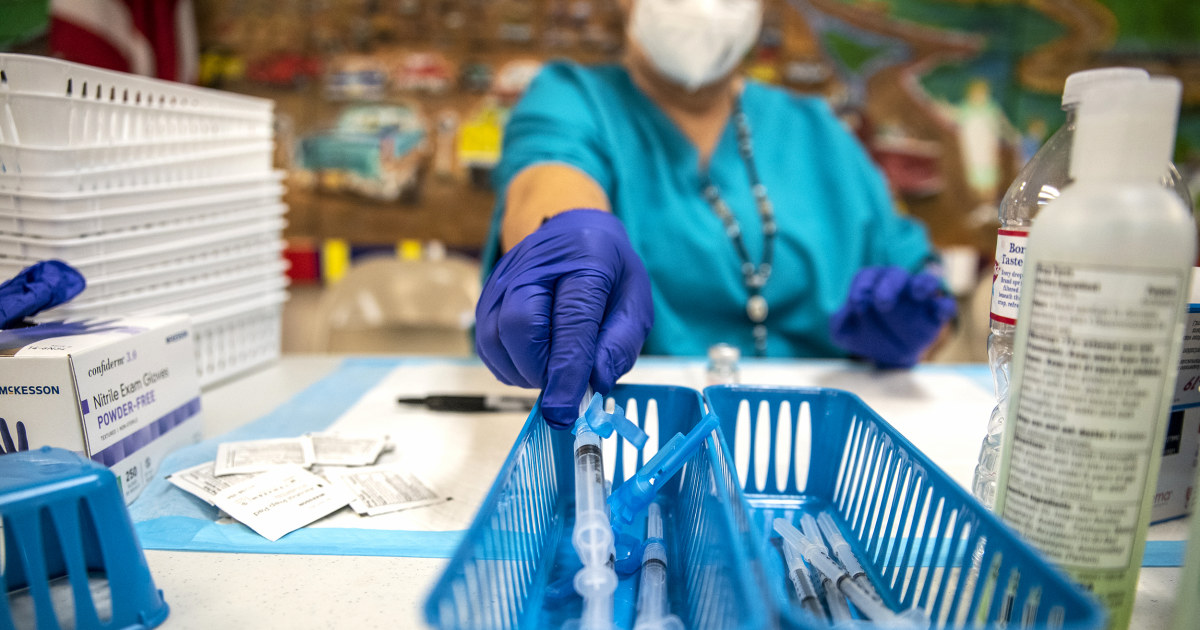You are here
Latino nurses important to help US COVID patients but shortages persist.
Primary tabs
 There are too few Latino nurses. Covid showed how important they are. Fewer than six percent of U.S. registered nurses are Latino as Covid-19 showed the need for more Hispanics in the profession. Some programs are trying to expand opportunity. NBC News
There are too few Latino nurses. Covid showed how important they are. Fewer than six percent of U.S. registered nurses are Latino as Covid-19 showed the need for more Hispanics in the profession. Some programs are trying to expand opportunity. NBC News Registered nurse Luis Medina walked into his shift in December and was told a positive Covid-19 patient was resisting wearing his oxygen mask. Despite repeated attempts by a fellow nurse, they said, it was hard to communicate with the patient, because he spoke Spanish.
Medina, 25, who works at a community hospital near La Mirada, California, went to see the patient and explained in his native language the importance of wearing the mask and the consequences of not doing so.
Just having that language barrier and being able to address that, the patient ended up getting better, because he kept the oxygen mask on," said Medina, a graduate of and part-time professor at Mount Saint Mary's University in Los Angeles. ...
The pandemic has disproportionately hit Latinos throughout the country, who are already at a disadvantage as they are likely to work in front-line jobs and have the highest uninsured rates. Liz Guevara, 31, a nurse care manager at La Clinica del Pueblo in Washington, D.C., saw a majority of Latino patients during the pandemic, and she found knowing Spanish and being Latina to be a big help; the Washington area has a large Central American population. ...
A nursing degree can provide ample career opportunities, from a trauma nurse to a newborn nursery nurse with a median salary of $75,330, according to the U.S. Bureau of Labor Statistics.
Yet the number of Latino nurses is disproportionate to its demographic's size. Nearly 1 in 5 people in the country are Hispanic, according to the recent census, but the Department of Health and Human Services found in a 2017 analysis that out of all 3.3 million registered nurses, only 5.7 percent were Latinos; 73.5 percent were white.
That's better than it was when Antonia Villarruel, the dean of Nursing at the University of Pennsylvania, first started — then, it was just 2 percent — but there is still a long road ahead for improvement.
Villarruel has said for years that structural barriers get in the way of getting more Latinos into nursing. Education is the first barrier, and it goes beyond a high school diploma. High schools with predominantly Latino student bodies are in underserved communities, Villarruel said, and students aren't getting the science courses they need to enter nursing.
"So if you don't come from a good high school, get good science grades, it's not easy," she said. "There's barriers almost in every single junction that you move forward in." ...
To address the shortage of Latinas specifically, Hispanic Star and NurseHeroes.org collaborated to create a scholarship program, Hispanic Star Nurse Heroes, to create opportunities in the health care industry. The fund includes a $150,000 donation that will give 20 future nurses $7,500 apiece to cover tuition. The goal will be to raise $7.5 million for 1,000 Latinas, and, because 92 percent of nurses are women, the fund expects applicants to be women but makes it clear that the program is open to all Latinos. ...



Recent Comments